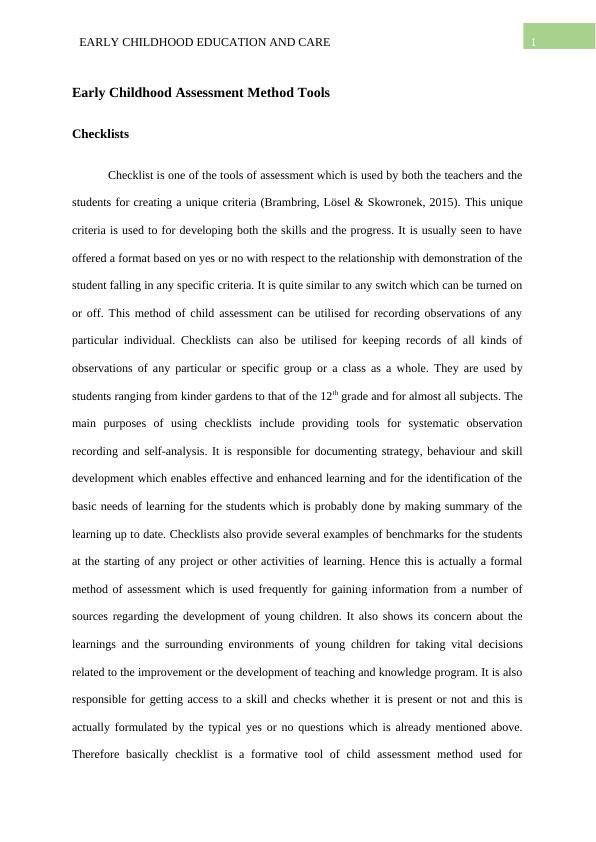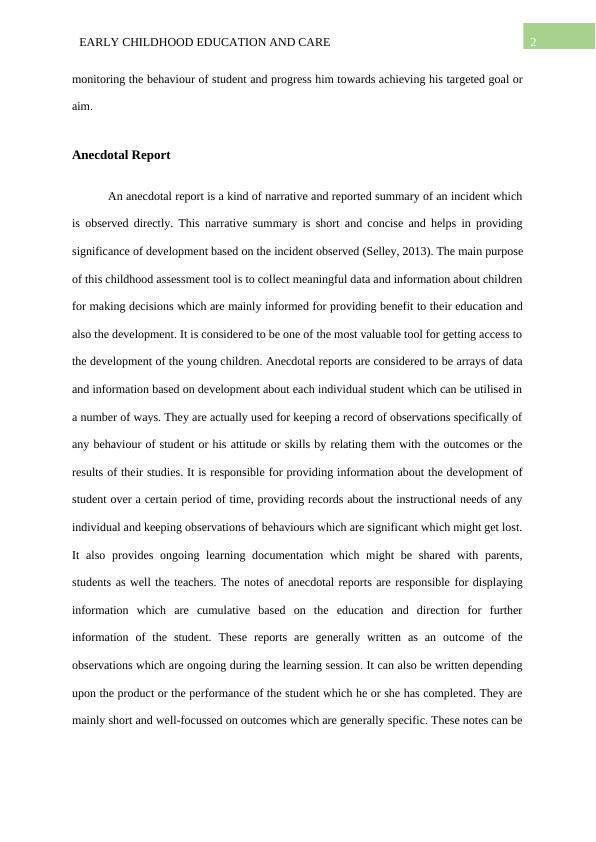Early Childhood Education and Care
Research and review various early childhood assessment methods, choose one method to learn more about, and write a paper including an overview of the chosen method, its domain(s) and purposes, supported by credible references, and a reflection on the reasons for choosing the specific method.
9 Pages1257 Words300 Views
Added on 2023-04-21
About This Document
This document discusses the various tools used for early childhood assessment, such as checklists and anecdotal reports. It explains how these tools are used to monitor student behavior and progress, and how they help in making informed decisions for education and development. The document also highlights the importance of collaboration between teachers and parents in supporting children's growth.
Early Childhood Education and Care
Research and review various early childhood assessment methods, choose one method to learn more about, and write a paper including an overview of the chosen method, its domain(s) and purposes, supported by credible references, and a reflection on the reasons for choosing the specific method.
Added on 2023-04-21
ShareRelated Documents
End of preview
Want to access all the pages? Upload your documents or become a member.
Methods of Documentation and Curriculum Approaches
|12
|2652
|398
Curriculum Approach and Documentation Methods | Early Childhood Education and Care
|15
|3359
|42
Critiquing Documentation And Curriculum
|13
|3585
|34
CHCECE013 Use Information About Children to Inform Practice
|12
|3322
|105
Early Childhood Education and Care Assignment
|5
|1393
|414
Early Childhood: Assessments and Recommendations for Child Development
|9
|2164
|60



